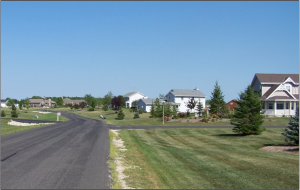This month marks one year since the coronavirus pandemic began to significantly impact the U.S. Based on phone logs and email records, Kevin answered 124 questions from local officials, developers, and citizens over that one-year period. Here’s a sample of topics:
- Farmland preservation zoning
- “Tiny homes”
- Well water quality
- Impacts of dam removal
- Allowability of uses such as beehives or chickens in a residential area
- Amending a town’s comprehensive plan
- Setback distances for new septic systems
- DNR regulations for abandoned cisterns
- Nonconforming properties
- Best zoning district for a new paintball business
- Short-term residential rentals
- Grant funding options for improving public access to a lake
- Feasibility of a “cluster subdivision” with 50% open space
- Using an “official map” to reserve future right-of-way
Many of these questions arise because planning and zoning have become much more complicated over the years as new regulations and new land uses (e.g., cell towers, wedding barns, solar farms, accessory dwelling units, etc.) have entered the scene. Population growth also drives increases in questions as land-use conflicts with neighboring properties become more likely. Another factor is the amount of turnover among local officials, especially clerks, so questions that may’ve been sufficiently covered five years ago can often pop up again.

In the past year, however, there appeared to be two additional factors. One is that more people than ever before have entered their retirement years, and, consequently, many plans are being made for how to divide up or develop landholdings. Second, the “downtime” many people have experienced as a result of the pandemic has given landowners an opportunity to ponder new options for their property.
Although some questions can be answered within 15 minutes, the majority require extensive research and double-checking of sources that can take several hours by the time Kevin is satisfied that his response is worded correctly and isn’t overlooking any legalities.




